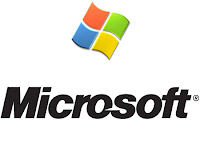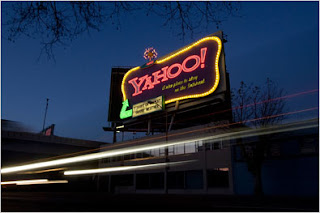 You and your team are starting a new project. They need to brainstorm.
You and your team are starting a new project. They need to brainstorm.
Following are some of the brainstorm-related questions that we ask the team of our clients:
- Do you focus on knowing the planned outcome?
- Do you prioritizes what are your core values into your brainstorm session?
- Does the specifics of the objectives connect to each other and the goal?
- Do you know what are the guidelines that your team abides by?
- Does you and your team connect to Collaborate?
If you cannot answer these questions, you need a strategic collaborative process.
You need Compass AE.
###
February 10, 2008
Slipstream
Mashups Are Breaking the Mold at MicrosoftBy JOHN MARKOFF
REDMOND, Wash. TUCKED away in a building on this forested corporate campus, John Montgomery and his team of 17 programmers might be more at home in Silicon Valley than at Microsoft.
Compared with its tenacious Internet competitors like Google and Yahoo, Microsoft is generally still viewed as being more of the shrink-wrapped software generation than the Web 2.0 world.
In Silicon Valley today, software is increasingly delivered as a Web service, it is often put together by teams of programmers who might be scattered on three continents, it’s often free to users, and Web surfers usually do the testing soon after the first prototype is complete.
By contrast, Microsoft has long been a software engineering culture in which huge projects like Windows Vista are developed and tested by teams of hundreds, and whose completion time is measured in a large fraction of decades.
Although it is not yet widely visible to the outside world, some people inside Microsoft are beginning to break that mold.
Mr. Montgomery, a veteran product manager who has also worked as a computer industry writer and editor, is an example of how it just might be possible to teach dinosaurs to dance.
Last fall, his team introduced an intriguing software Web service called Popfly that is intended to make it possible for nonprogrammers to plug together Web components and data sources quickly to create useful new Web services. For example, news feeds could be added to digital images, or data lists to maps.
Introduced at the Web 2.0 conference last year by Steven A. Ballmer, Microsoft’s chief executive, Popfly was picked by PC World magazine as one of the most innovative computing and consumer electronics products of 2007. It has garnered more than 100,000 users the company says the exact number is confidential and now has a library of more than 50,000 mashups: new components or Web pages that have been created in a visual snap-together fashion, like Lego blocks.
The mashup is at the heart of a generation of Lego-style software that is emblematic of the second generation of the Internet. Both Google and Yahoo have developed tools to help Web users display apartment rentals on maps, or build complicated Web sites like
TripTouch.com, which is intended to offer diverse local information for travelers.
The Popfly programmers, however, have gone a step further in an effort to design a tool that is intended for a generation of Web users who are familiar with the Internet but are not skilled programmers.
A user might take Popfly and mash up his list of Amazon book recommendations with the Seattle Library book catalog on the Web, he said, and receive a notification when the waiting list for a particular book was down to zero.
This is not just a passive experience, Mr. Montgomery said. You can take this stuff and use it in new ways.
He now sees his target audience as people who are not professional developers, but who work with information.
Popfly, he said, is for the 21- to 27-year-old crowd who grew up on the Web.
They have never known a world without eBay, Amazon, or Google, he added. They assume that when you create a piece of software it will be Internet-connected and it will have an innate sense of who your friends are.
Microsoft is certainly not alone in seeing this kind of an opportunity. Yahoo offers a widely used tool call Yahoo Pipes that offers some of the same capabilities as Popfly, and Google has designed a mashup editor for more skilled programmers.
But Mr. Montgomery sees Popfly as a more ambitious and comprehensive effort. He also thinks that it could turn into a general educational tool for nonprogrammers.
That is what prompted him to visit an introductory computing course in December at Bentley College in Waltham, Mass., where the computer scientist Mark Frydenberg is using Popfly to teach his students how to interact with digital data in new ways.
So far, students’ projects have run the gamut from simple calculators or clocks that can be displayed on a Web page, to World of Warcraft blocks that make it possible to connect the multiplayer fantasy game to other Web services like Facebook.
Mr. Frydenberg said he believed that Popfly would be a perfect educational tool for the Bentley students, because the college has a general business focus.
This will help the students think about merging data from two different sources, he said. That’s a problem that happens in business all the time.
IF Popfly can become that kind of a tool widely used on the Web, it will be an important quiver in the strategy that was started in 2005 by Ray Ozzie, who is now Microsoft’s chief software architect.
His message was that the only interesting software is going to be software that is connected to the Web and we have to work on that, Mr. Montgomery said.
At the time, Mr. Montgomery was the product manager of the company’s .Net software business, which had been the focus of Microsoft’s previous Internet strategy. But he quickly realized that Microsoft had to reach a much broader audience than its core base of professional software developers.
Mr. Montgomery was intrigued by the phenomenon of 13-year-olds who were tricking out their MySpace pages with digital bling. They didn’t realize it, but by cutting and pasting snippets of code together, they were programming, he said.
The largest challenge facing the Microsoft team of Popfly developers will be to gain the acceptance of the broader Web world. Because the company chose to design Popfly using a Microsoft Web graphics and animation technology called Silverlight, it will be treated with suspicion by an Internet universe that is increasingly committed to open standards.
Silverlight is an alternative developed by Microsoft to compete against Adobe’s Flash and, more recently, Flex systems, that are now used ubiquitously by Web developers.
Mr. Montgomery will also have to overcome the skepticism with which many Internet veterans now view Microsoft.
Popfly shows me that Microsoft still thinks this is all about software, rather than about accumulating data via network effects, which to me is the core of Web 2.0, said Tim O’Reilly, the founder and chief executive of O’Reilly Media, a print and online publisher. They are using Popfly to push Silverlight, rather than really trying to get into the mashup game.
For his part, Mr. Montgomery believes that Popfly does have some very big ideas to offer the Web world. He is following in an important tradition that began in the 1960s with computer languages like Logo and Smalltalk, which were aimed at unlocking the power of computing for nontechnical users. Today he is betting that Popfly will offer a simple way to give the power of programming to the rest of us.
Copyright 2008 The New York Times Company
http://www.nytimes.com/2008/02/10/business/10slipstream.html











